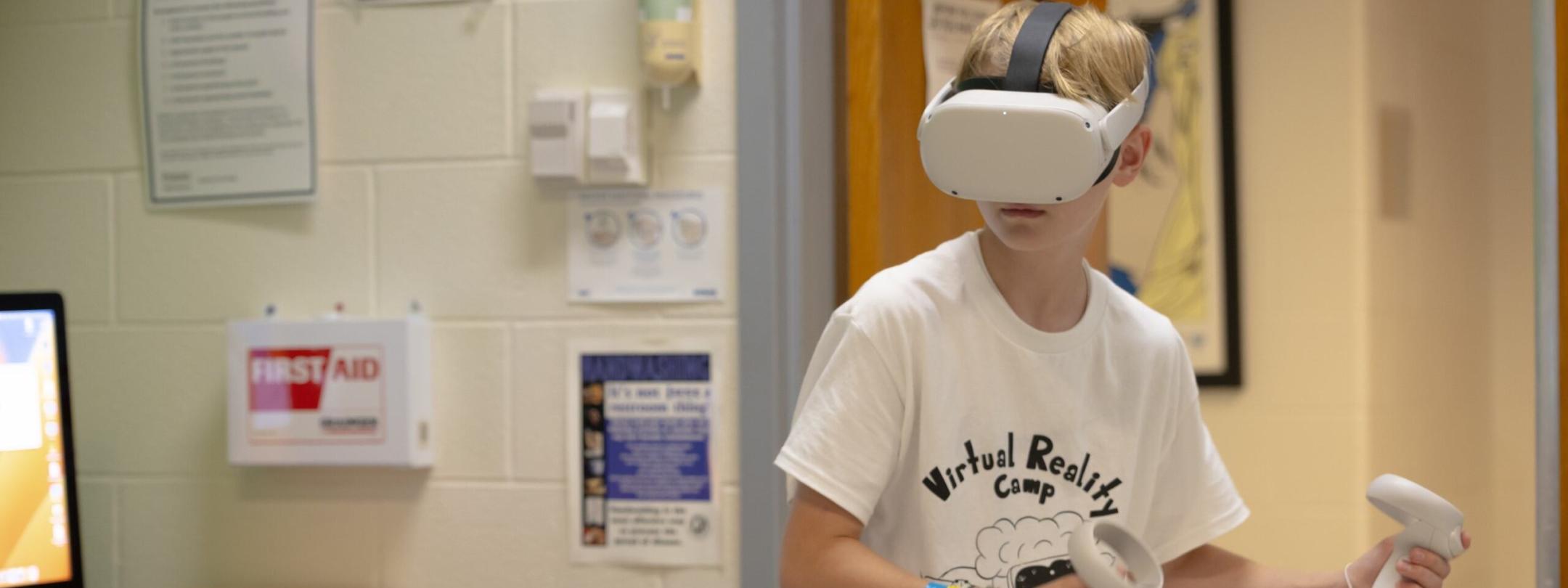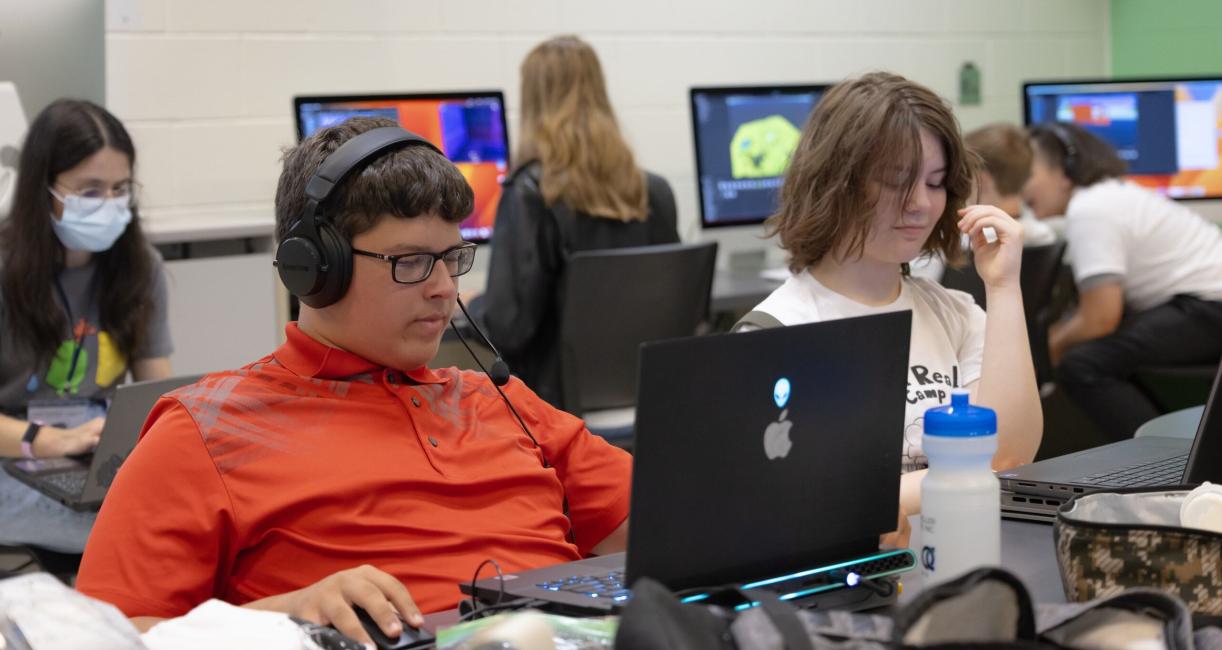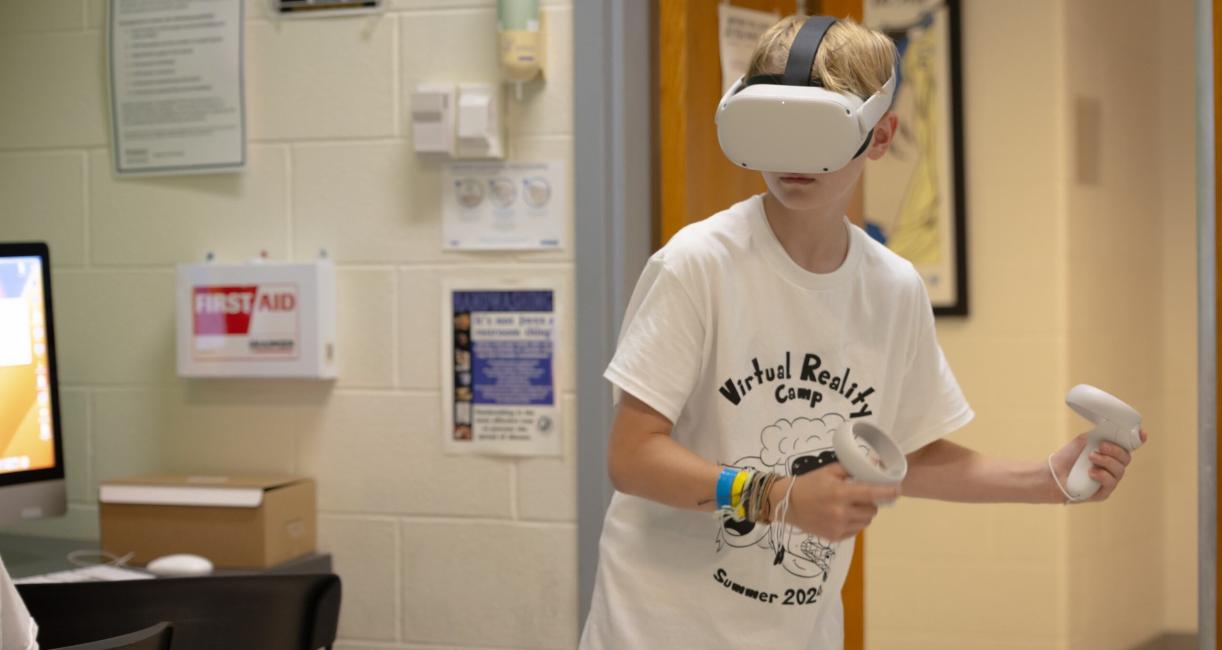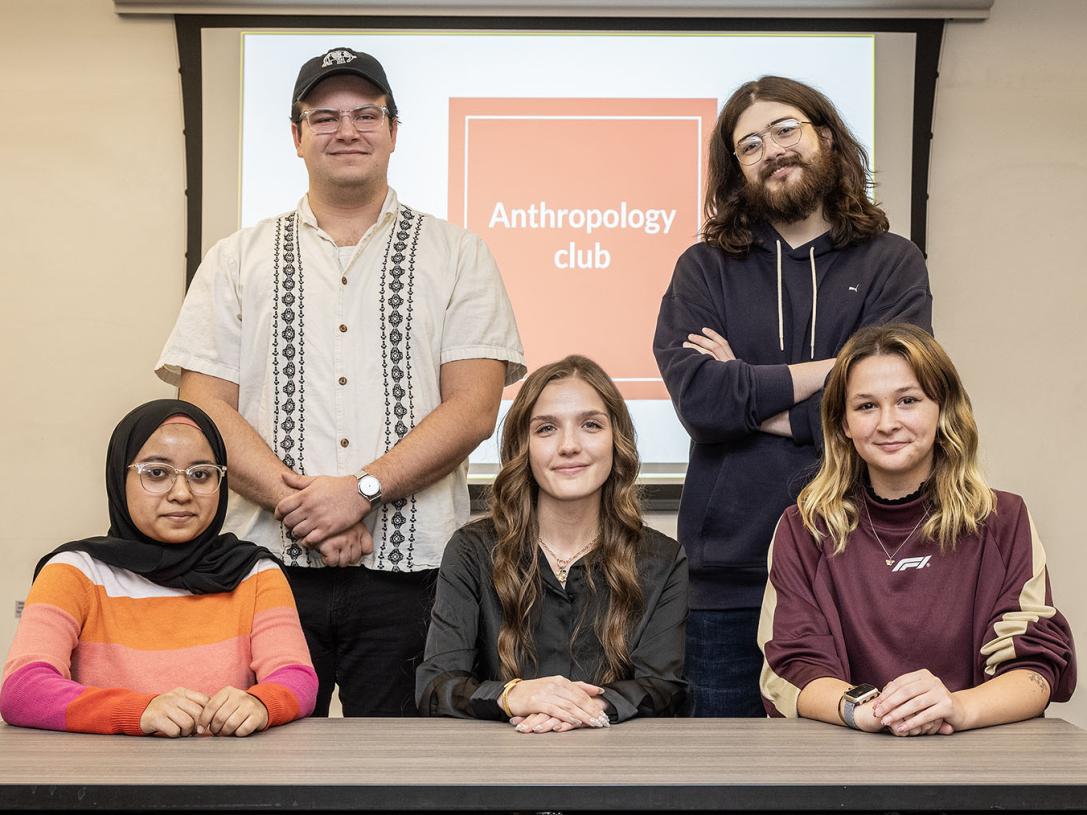



Virtual Reality camp always one of summer’s most popular
By Blake Sebring
July 23, 2024
As only a teenager can, Bradley Gordon, 13, says the word “fun” about 53 times during a four-minute answer about why he enjoys Virtual Reality Camp at Purdue University Fort Wayne. He’s attended the weeklong Community Arts Academy experience two years in a row.
“It’s really fun,” the Maple Creek Middle School eighth grader said. “You get to make things and then experience them, be creative, and use that in virtual reality and then play it. You can really be in that world that you created, which is fun.”
Essentially, the 23 campers learn to build short video games using VR to convey whatever they can dream of using the constantly evolving technology. When registration typically launches Feb. 1, the camp fills up quickly, includes a handful of returning students, and there’s always a waiting list.
“This [generation] of students is very engaged with technology, and I’m amazed how they speak that language with a natural approach,” said camp director Andres Montenegro, an associate professor in the Department of Art and Design who teaches computer animation, 3D modeling, and advanced renderings. “I am pleased and amazed with the experience they possess. They are full of imagination, and they have an instant way of learning things that makes the process easy.”
Partly because of those who return to the camp, Montenegro creates new assignments each year. The goals for this year’s July 8–12 sessions held in the Visual Arts Building were to create a large aquarium and fill it with dolphins and fish, and to build a multilevel haunted house, filling in the terrain around the complex. Gordon built six structures and surrounded his complex with a small mountain range, a forest, and a winding river full of sardines. There was also a massive goblin that wasn’t very threatening because it kept falling down, but it was a solid effort.
His haunted house was full of bedrooms, dining rooms, bathrooms, and stairs to reach several of the levels.
“I’m not a tech fanatic or anything, but this is still fun,” Gordon said. “I like being creative, and it’s a fun, new experience.”
Students are encouraged to bring VR headsets from home, and the university also provides six they can play with. It’s not uncommon to see a student wearing goggles standing in one of the room’s few open areas swinging their arms around while the others are sitting at desks working at computers to refine their landscapes.
“The goal is for them to become introductory developers,” Montenegro said. “They are learning the complexity of the whole process. I’m pretty positive that after this camp they will have more components to play with, to interact with, and to go beyond so they can make their own things. This is a basic experience, something you can take and see how it is implemented and available.”
Montenegro said over the last six years, he has seen several camp participants later attend PFW. His daughter, Ignacia, serves as assistant director for the camp after graduating in 2018 with degrees in graphic design and animation. She now works as a graphic artist and illustrator.
“They grew up playing games on their computers, their tablet, and their phone—and now they can play with their headsets, immersed with 3D optics,” Ignacia said. “It’s one thing to play games created by others that are available on the market, but it’s a completely different thing to create your own thing and see it in action as well.”



